Parque Natural de Urkiola · Ayuntamiento de Abadiño
Situación
Menú principal
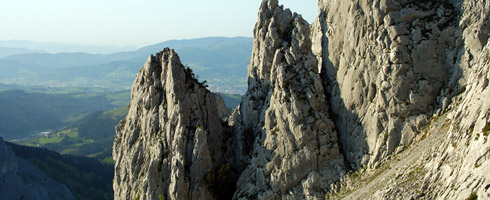
The crags are the most important habitat in Urkiola and are home to some of the Park’s most interesting vertebrates. This setting has some unusual characteristics to which the fauna have to adapt. The animals live in a place open to the weather and they have to withstand strong winds, snow and low temperature during the winter and high temperatures on the rocks in summer, lack of food, etc.
The reptiles include the Iberian or rock lizards, the European smooth snake and Seoane's viper. Rock lizards have even been seen on the summit of Anboto, at over 1,300 metres above sea level.
The many crags of the Urkiola mountains are home to much of the valuable fauna living in the Park, and those animals and birds nearly exclusively live in that habitat. Special mention should be made of the black redstart and Alpine Accentor among the Passeriformes, the red-billed and alpine coughs, the crow, Eurasian crag martin, the common rock thrush, and the Egyptian vulture, the Peregrine falcon and kestrel among the birds of prey.
During the winter, wallcreepers from high mountain areas, such as the Pyrenees or the Picos de Europa, can even be seen in the Atxarte Ravine.
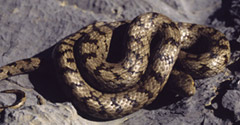
Grey or brown smooth snake, up to 80 cm long. It has a slender body and small head. There is a series of dark patches over the back. In general, there is a dark strip from the neck and across the eye. The eye has a round pupil. It feeds nearly exclusively on lizards. It can be aggressive and bite when upset, but it is harmless.
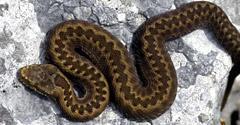
This viper is not usually more than 60 cm in length. It has a strong body and thin tail. The head is small and its nose is smooth, with no bumps. Its back is brown and it has a dark brown zigzag down the back. Its pupil is long and vertical. It mainly feeds off small mammals. It is very timid and flees from danger. Its bite is poisonous.
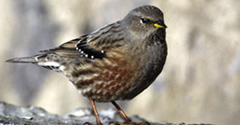
The bird is rather bigger than a sparrow and with a more compact body. It has a yellow spot at the bottom of its peak and clear speckling on its throat. Its wings are reddish brown, with small white dots. It often lands on the rocks and jumps from one to another. It basically feeds off insects and other vertebrates.
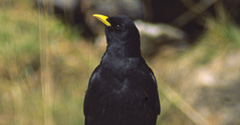
Chough that is 36-39 cm long, black in colour with a yellow beak. The chough is gregarious and can be seen in large flocks near to the Alluitz and Anboto ridges. It mainly feeds off insects during the summer and seeds and food left by the mountaineers during the rest of the year. It nests among and in cracks in the rocks. It is very confident and will approach people to look for food.
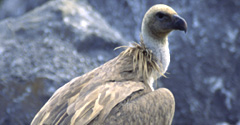
Large vulture that can measure over 250 cm in size. It is light brown in colour and its head is covered with short white feathers. It has a type of white collar around its neck, which is usually reddish-brown on the young birds. Its beak is very strong and is used to rip up the carrion that it finds during its relentless flights. There are over 60 pairs in Urkiola and the largest colony is at Mugarra, which has over half the pairs.
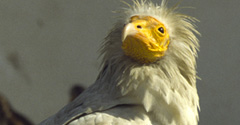
Small white vulture that feeds off carrion. The tips of the wings are black and are visible in flight. It can be up to 170 cm in size. It is a migratory bird that spends the winter in Africa and reaches Urkiola at the end of February or in March. It does not nest in colonies and the nest are usually quite apart. Up to 7 pairs have been counted in the park.
2006 - 2007 © Anteiglesia de Abadiño Town Council - All rights reserved